CRYPTID: Player's Online Guidebook
Learn to play, discover solutions to confusing scenarios, and understand definitions unique to CRYPTID CCG.
Open a menu and select a page
Table of Contents
Goal and Types of Cards
Parts of a Card
Parts of a Card - Element - Name - Pyre Cost - Artwork - Rarity Skull - HP and AP - Combat Abilities - Support Abilities - Evolution - Card Type - Flavor Text - Metadata
Play Area
How to Play!
Questions and Answers
Objective of the Game
The goal of CRYPTID is to kill 10 of your opponent's Cryptids before they do the same to you.
Only have a single deck on-hand?
You can use a single deck divided into two (each with at least 5 Kindling Cryptids) if you want a shorter match. In that case, you must kill 5 of the enemy's Cryptids instead.
In either case, make sure your deck(s) has enough Pyre cards to fuel your game!
Types of Cards
Before diving into battle, it's important to understand what types of cards there are and what they can (or can't) do.
Cryptids
Cryptids are monsters that can attack, support and evolve. You want to kill your enemy's Cryptids while keeping yours alive. There are three types of Cryptids.
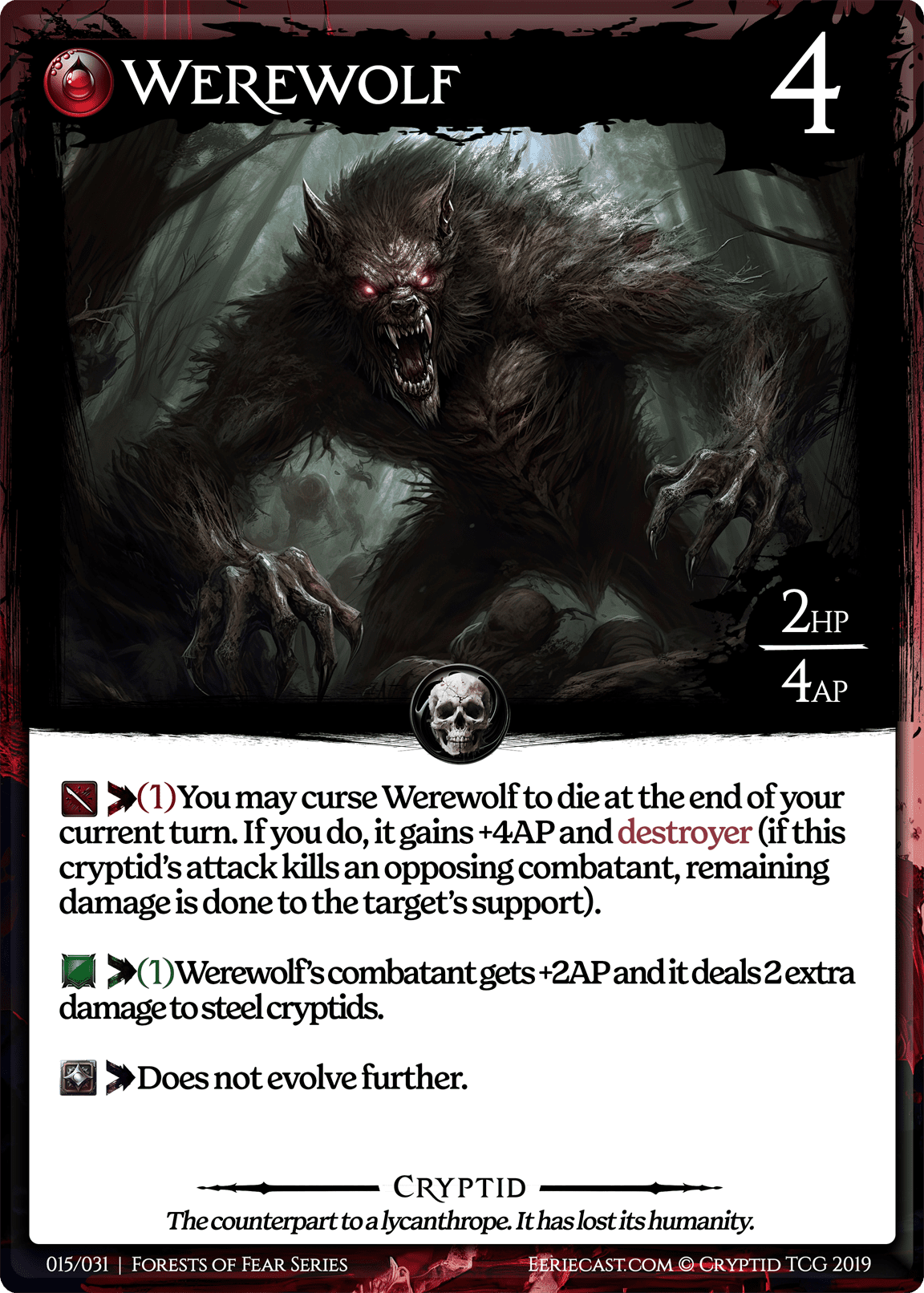
Cryptid Cards
Cryptid cards are the most basic monster card. Cryptids are conjured into the combat field or support field, can be evolved (if able), and can attack enemy monsters.
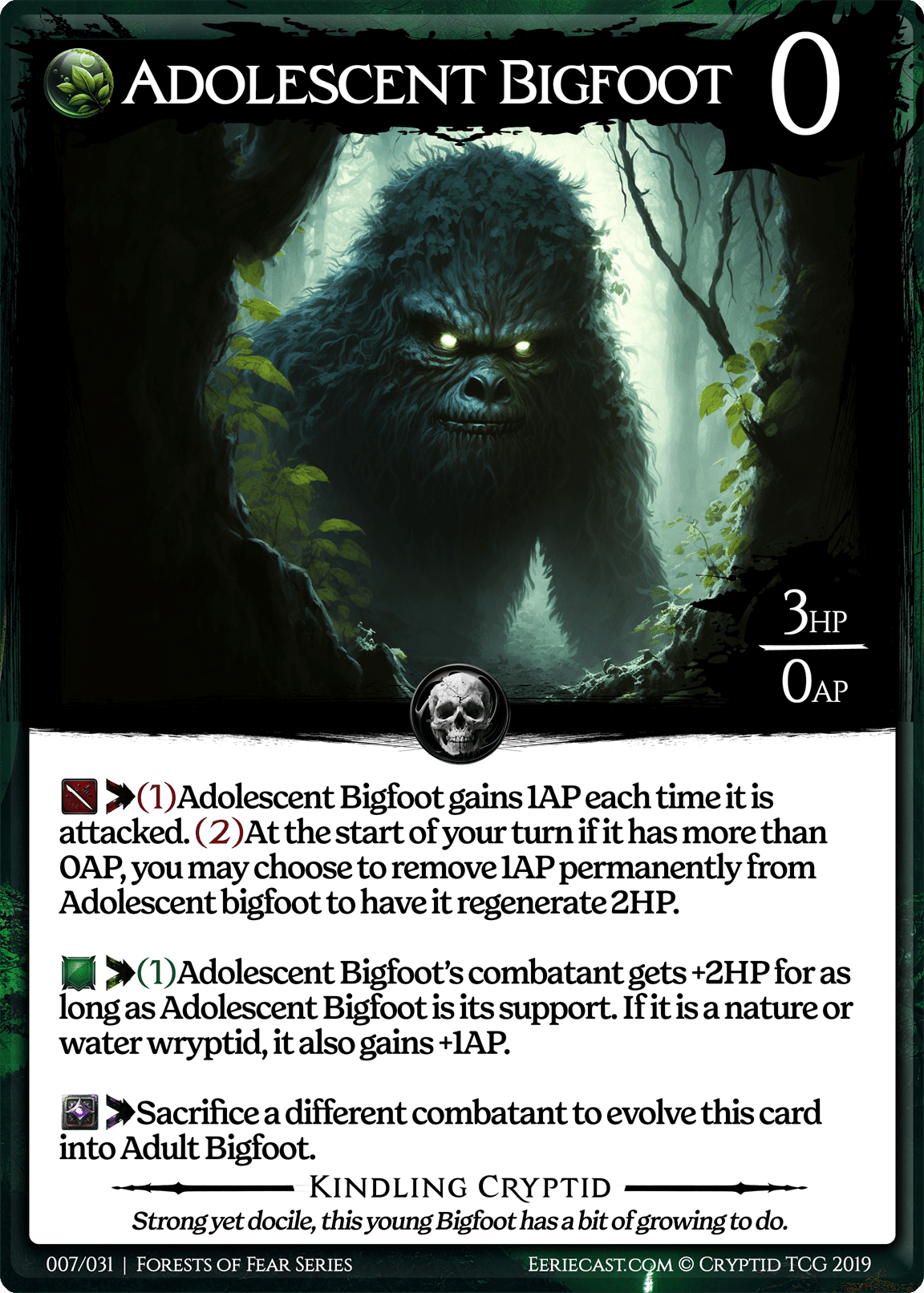
Kindling Cryptid Cards
Kindling Cryptid cards are monsters that are weaker than typical Cryptids. However, they are completely free to conjure (costing 0 Pyres). These cards exist to make sure players always have a Cryptid ready to conjure.
At the start of each game, Kindling Cryptids must be separated from your deck and placed within their own side-deck called the Kindling deck. For a normal game, you must have 10 Kindling Cryptids.
Keep in mind, Kindling Cryptids must be conjured if your opponent attacks and you have no Cryptids on the field. In this case, the attack lands on the Kindling Cryptid you just drew and placed on the field.
This is why the amount of Kindling Cryptids in your deck must be equal to or greater than the number of dead Cryptids required to win a game. And yes, you may have more than 10 Kindling Cryptids in your deck.
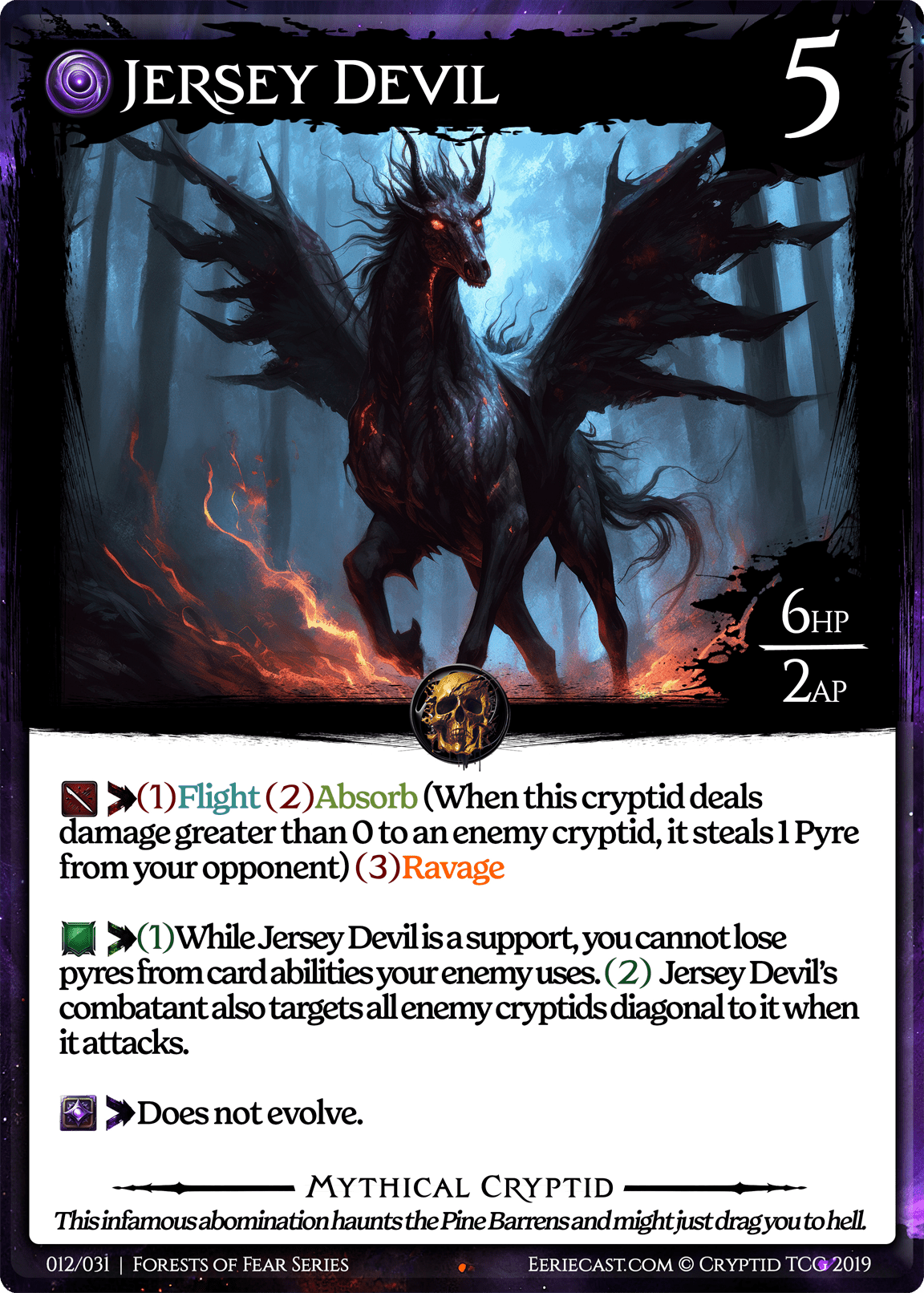
Mythical Cryptid Cards
Mythical Cryptid cards are monsters of a specific name. They tend to be a bit stronger than other cryptids of the same Pyre Cost and rarity. As such, you may only have a single copy of a specific Mythical Cryptid in your deck. You can have multiple types of Mythical Cryptids, but only one copy of each of a specific name. For example, you may only have a single Jersey Devil in your deck, and that same deck can also have a single Baba Yaga.
Instances
Instances are any non-cryptid cards. These cards help you win the battle with cunning or power. There are 5 types of instance cards.
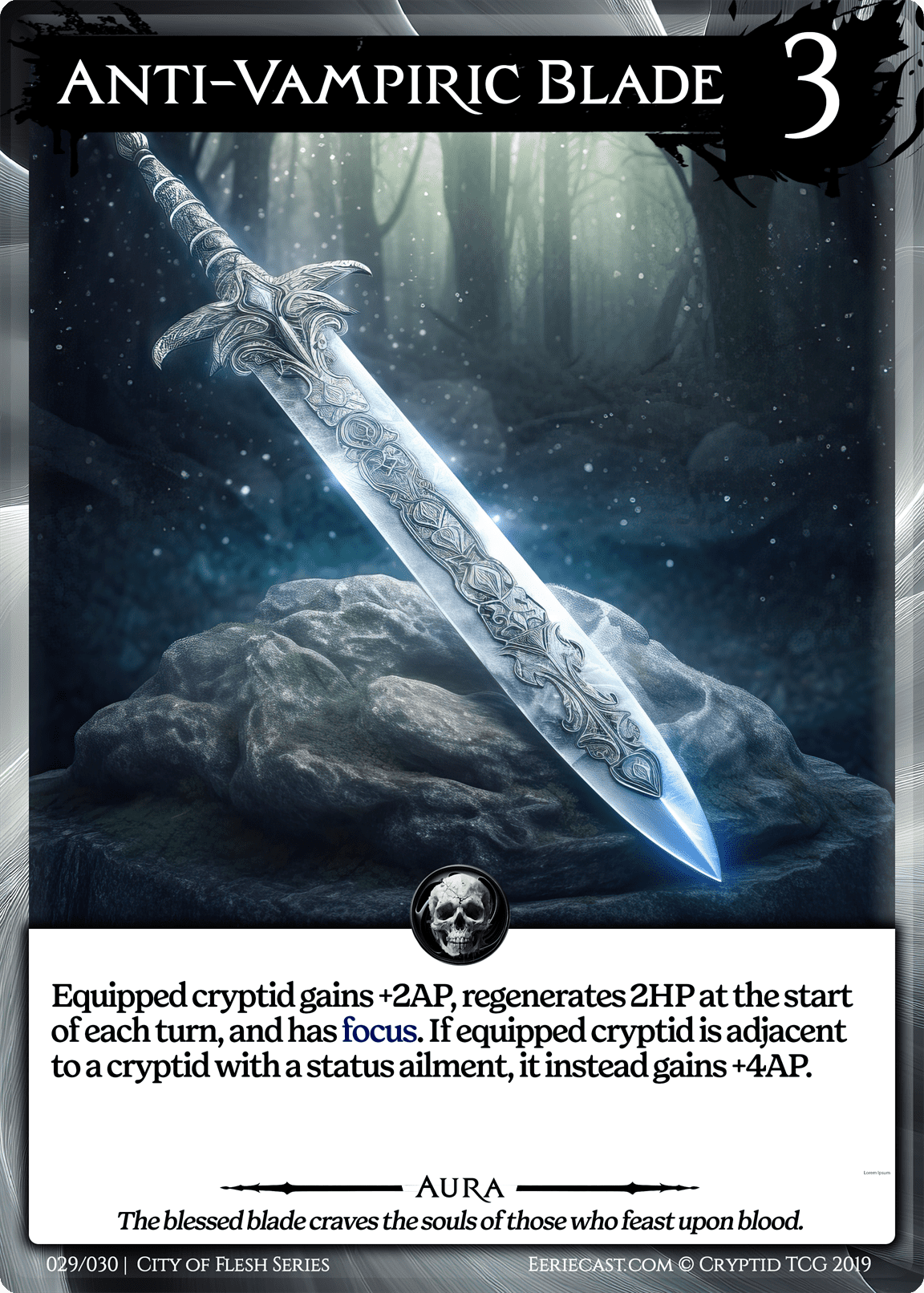
Aura Cards
Auras are cards that, upon paying their Pyre Cost, become equipped to a chosen Cryptid. So long as an Aura card is equipped to a Cryptid, it gains the buffs (or even debuffs) detailed on the Aura card.
Think of Auras as equipment or enchantments that can make your Cryptids stronger (or make your enemy's Cryptids vulnerable).
There is no limit to the number of Auras that can be attached/equipped to a cryptid.
Auras may only be conjured during your turn.
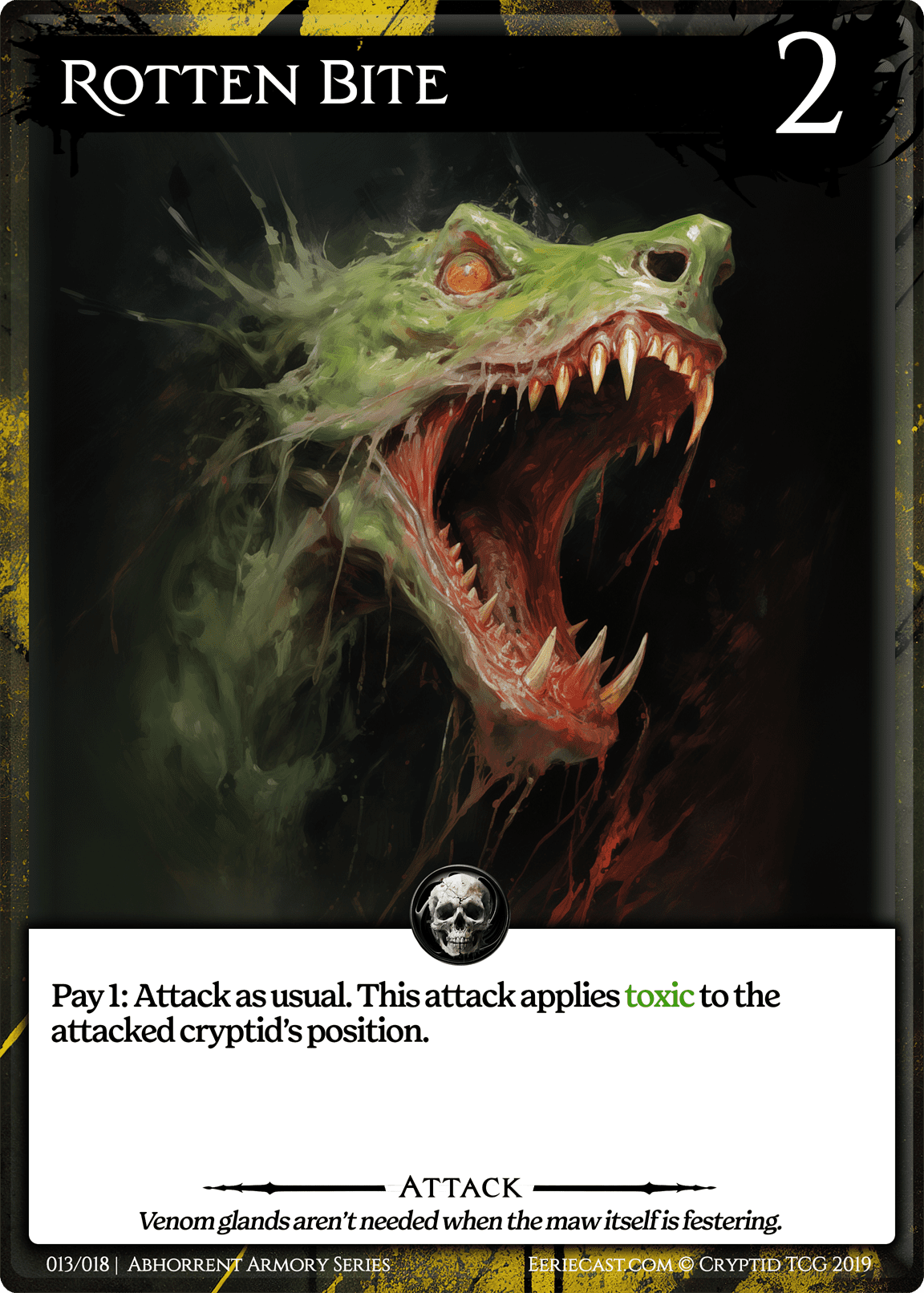
Attack Cards
Attack cards are equippable cards, as well. However, rather than buffing your Cryptids passively, Attack cards grant new attack options to the equipped Cryptid. Think of each Attack card like a new move your Cryptid can use.
When a Cryptid is equipped with an Attack card, it can attack normally or you may choose to pay the cost of the Attack card instead. You cannot do both. After all, a Cryptid can only attack once per turn (unless otherwise stated), so you must choose between a basic attack or your Attack card abilities.
There is no limit to the number of Attack cards that may be attached/equipped to a Cryptid.
Attack cards may only be conjured during your turn.
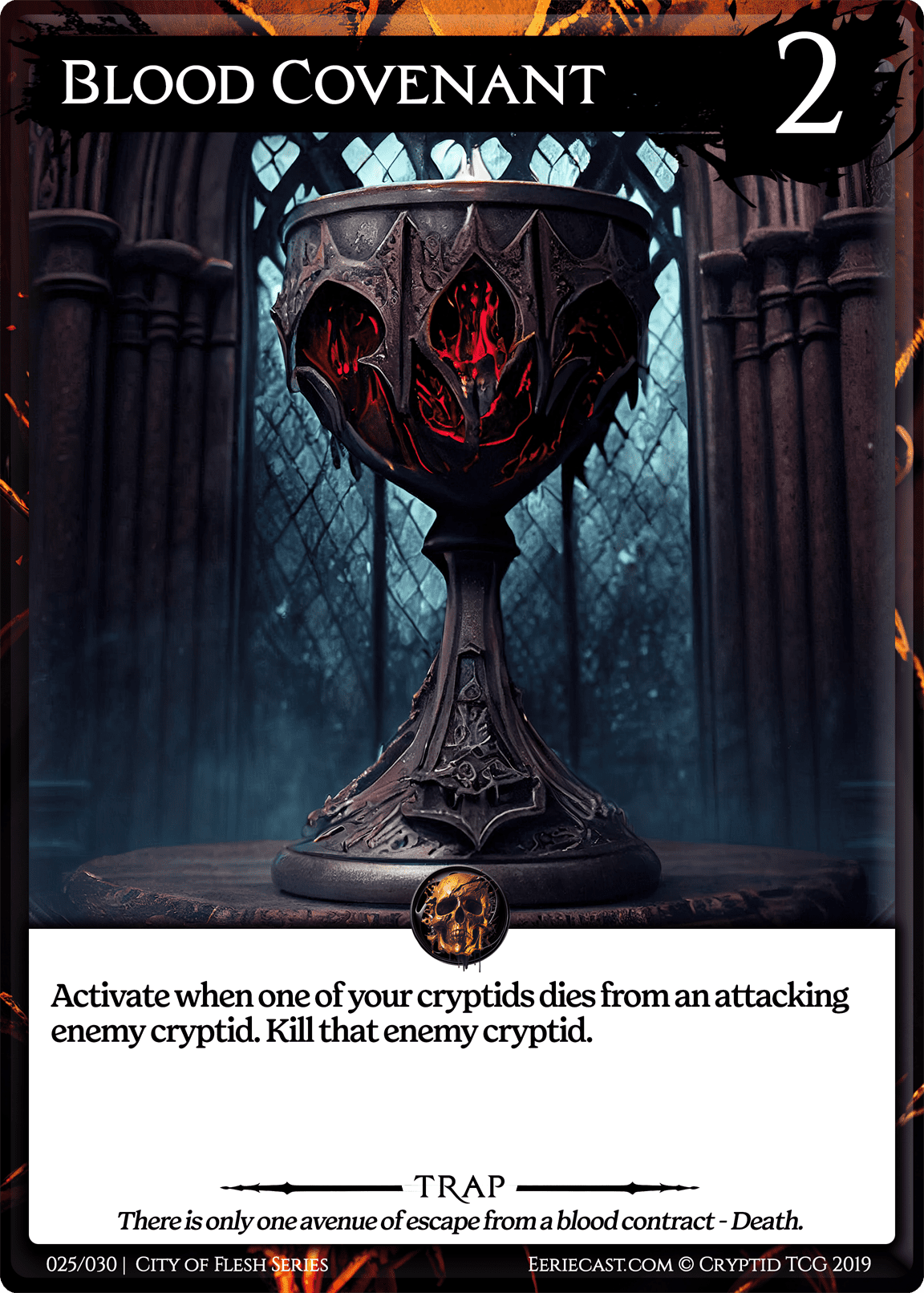
Trap Cards
Traps are ambush cards that can only be conjured during your turn. You may only have two Traps on the field at any given time - One in the left trap field and one in the right trap field.
Traps are played face-down when conjured. Each Trap has specific conditions that must be met in order to activate. When a trap's conditions are met (during either player's turn), activate it and turn it face-up. When activated, the effects detailed on the card occur.
Use traps to your advantage! They are great for:
- Intimidating your enemy by merely existing on the field
- Preventing your enemy from making damaging plays against you
- Killing Cryptids that dared to attack with traps on your side of the field
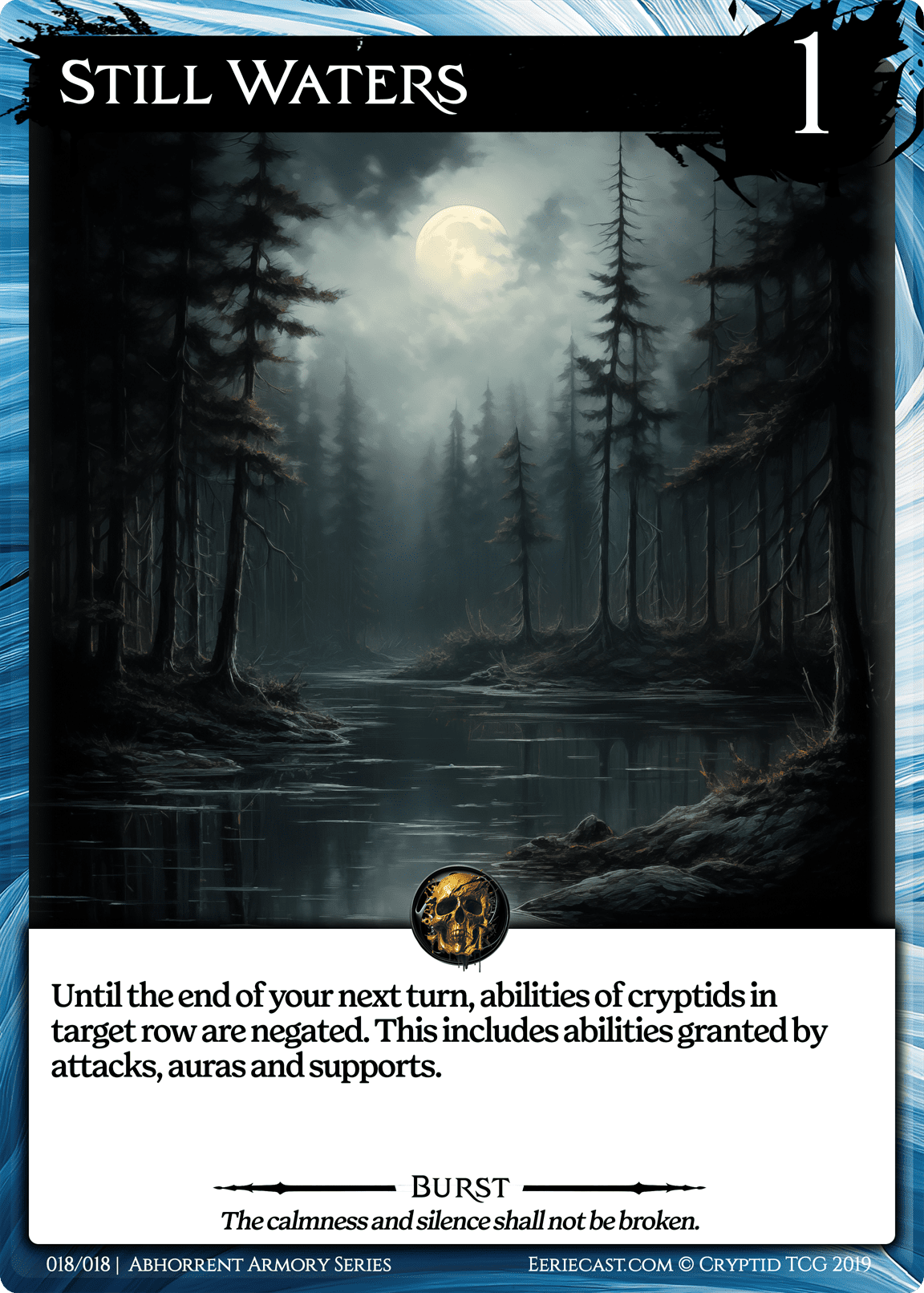
Burst Cards
Bursts are powerful cards that can be conjured straight from your hand for their Pyre cost at any time, even during your opponent's turn. Use them at the right time to disrupt your enemy's turn or to protect your cryptids.
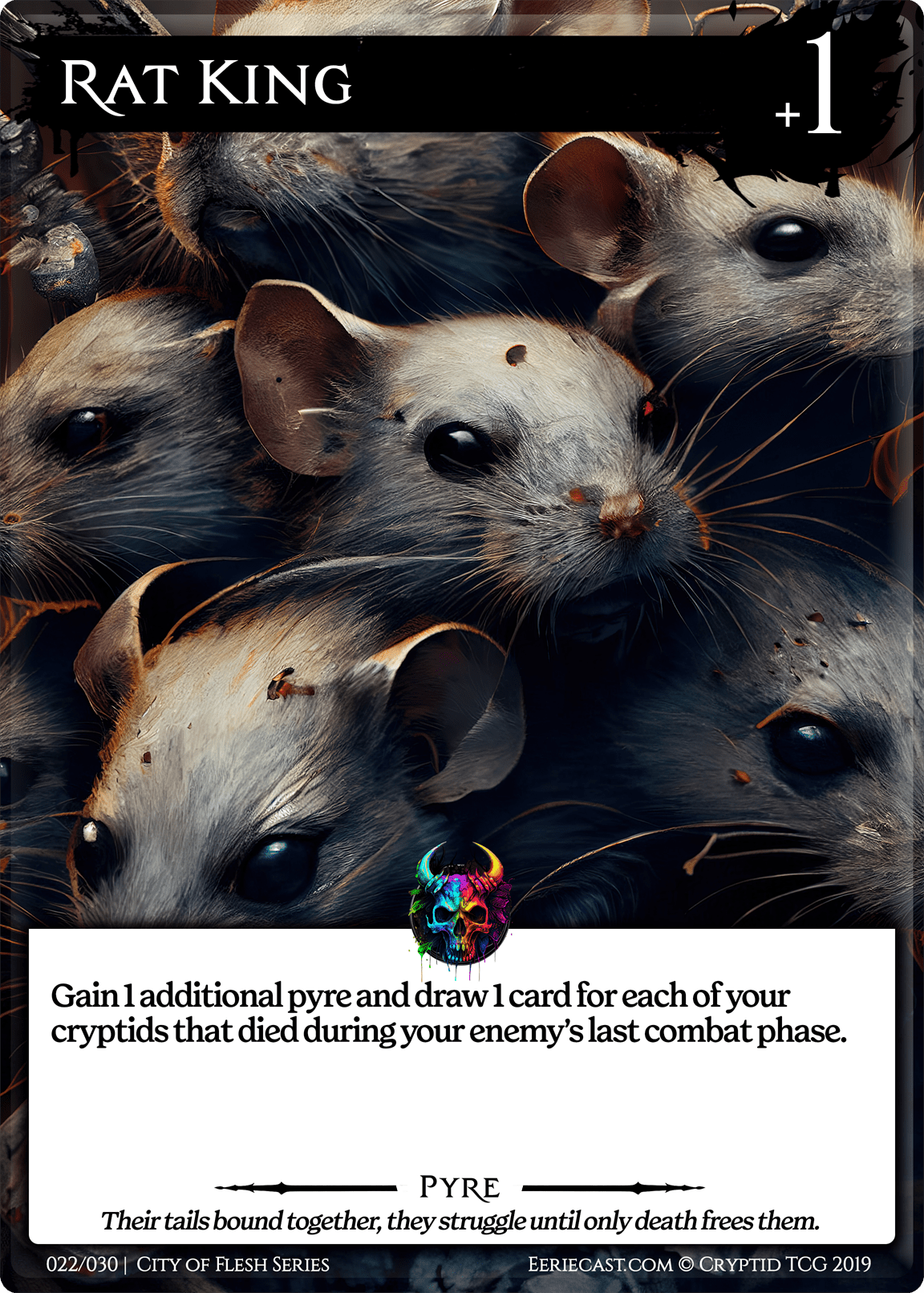
Pyre Cards
Pyre cards are the most important cards in CRYPTID. These cards grant you Pyres (points) which you can spend to play other cards.
Every card has a Pyre Cost at the top right of the card. That is the number of Pyres you must have to conjure the card.
However, Pyre cards have a "+" sign next to their Pyre Cost, which indicates that the card is free to conjure and actually grants you the amount of Pyres shown.
Some Pyre cards are special Pyres which not only grant you the Pyres shown at the top right, but also bonus Pyres listed in the card details. Usually, these bonus Pyres have conditions to meet, but if you manage to fulfill these conditions, you can gain numerous Pyres in a single turn!
Pyres are permanent until they are stolen or spent. You can save Pyres by not spending some or all the Pyres you have on your current turn.
